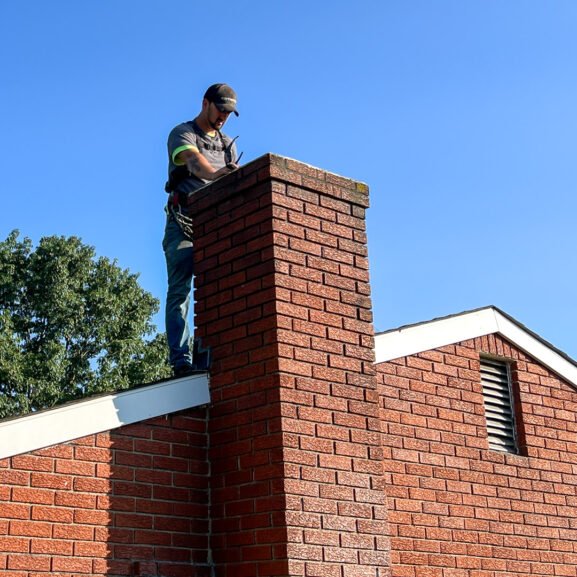Prevent Excessive Soot from Burning Unseasoned Firewood: Tips for Efficient Fires
As the chill of winter sets in, many of us turn to the warmth and comfort of a crackling fire. Yet, not all firewood is created equal. Burning unseasoned firewood can lead to excessive soot, a problem that not only diminishes the cozy ambiance but also poses health and environmental risks.
When wood isn’t properly dried, it releases more smoke and soot, clogging chimneys and polluting the air. This isn’t just an inconvenience; it’s a hazard that can lead to chimney fires and respiratory issues. In this text, we’ll explore why unseasoned firewood creates so much soot and how we can minimize its impact. Let’s ensure our fires stay warm and inviting without compromising safety or air quality.

The Importance of Unseasoned Firewood: What You Need to Know
Using unseasoned wood in your fireplace might seem like a shortcut, but it often leads to unintended consequences. Excessive soot buildup and creosote accumulation are common issues, affecting not only air quality but also the safety and efficiency of your fires. Let’s explore the characteristics and reasons for seasoning firewood.
Characteristics of Unseasoned Firewood
Unseasoned wood is notorious for its high moisture content. Typically, it contains more than 30% moisture, making it difficult to burn efficiently. Instead of providing a warm, cozy fire, unseasoned wood creates more smoke emissions. This smoke doesn’t just disappear; it contributes to soot buildup in your chimney, potentially causing blockages (see US Forest Service for more on firewood properties).
- High Moisture: Over 30% moisture content.
- Increased Smoke: More smoke emissions.
- Poor Heat Output: Less efficient burning.
Residents often face unique chimney challenges due to unseasoned wood, leading to frequent fireplace maintenance needs. Reach out to certified professionals for consultation and never face the sooty consequences alone.
Why Firewood Needs Seasoning
Seasoning is not just a fancy term; it’s critical for ensuring cleaner burn and reducing creosote accumulation. Properly seasoned wood (with moisture content under 20%) improves burning efficiency and heat output, making your fires safer and more pleasant. This doesn’t only enhance fire safety but contributes to better air quality in your home.
- Moisture Reduction: Lowers content below 20%.
- Efficiency Boost: Improves burning efficiency.
- Safer Fires: Reduces creosote and soot risks.
Fireplace owners must prioritize seasoned firewood to maintain chimney health. Burning unseasoned wood is like trying to drive a car without wheels—funny in theory, disastrous in practice! Avoid chimney cleaning disasters by consulting experts or visiting National Fire Protection Association for more fire safety tips.
Causes of Excessive Soot
Burning unseasoned wood in your fireplace causes excessive soot and smoke emissions. Let’s explore the main causes of this sooty mess.
Moisture Content in Unseasoned Wood
Unseasoned wood contains over 30% moisture, leading to more soot. This wet wood laughs in the face of fire safety, creating more steam than heat. High moisture content causes:
- Soot buildup: Wet wood doesn’t burn efficiently.
- Creosote accumulation: More moisture means more creosote, a chimney’s worst nightmare.
- Poor heat output: Waterlogged logs can’t heat your home effectively.
Residents face unique chimney challenges due to regional humidity levels. We recommend consulting experts for proper firewood storage tips. Reach out to certified professionals for consultation. Properly seasoning wood to below 20% moisture ensures burning efficiency and reduces soot.

Incomplete Combustion Process
Incomplete combustion leads to excessive soot, much like a failed campfire marshmallow roast. When wood doesn’t burn completely:
- Air quality suffers: Smoke emissions increase.
- More soot forms: Inefficient burning doubles the dirty work.
- Frequency of chimney cleaning increases: More soot means more maintenance.
Improve burning efficiency by using seasoned wood. Proper firewood storage and fireplace maintenance are key. For expert advice, check out NFPA’s guidelines and CSIA’s chimney safety tips. Let’s keep those fireplaces clean and cozy. For tailored chimney care, reach out to certified professionals for consultation.
Effects of Excessive Soot
Burning unseasoned wood often leads to excessive soot. This not only impacts air quality but can also damage your chimney. Our professional services can help manage these concerns effectively. Reach out to certified professionals for consultation today.
Impact on Indoor Air Quality
Excessive soot seriously affects indoor air quality. It releases fine particles that can enter your lungs, causing respiratory issues. When too much soot is present, it can make the air feel stuffy and unpleasant. You know your indoor air isn’t ideal when you’re confused if it’s a fire or if you need a fire extinguisher for all that smoke! Consult the American Lung Association for more on respiratory health. Proper firewood storage and using seasoned wood improve air quality by reducing smoke emissions. This is particularly crucial where humidity challenges wood drying.
Identifying Unseasoned Firewood
Recognizing unseasoned firewood helps in maintaining fire safety and burning efficiency. It’s crucial for fireplace owners to spot signs of moisture-rich wood, as burning it can lead to soot buildup and creosote accumulation.
Visual and Physical Indicators
Unseasoned wood often reveals itself through a few tell-tale signs. Light in weight it’s not! Freshly cut wood is heavy due to moisture. The bark, stubbornly clinging to the wood, might peel but stays stuck. Check the wood’s color; unseasoned logs appear pale. Listen for cracks or dull thuds when two pieces are struck together, indicating moisture. Identifying these signs can safeguard against poor heat output and frequent chimney cleaning.
For more tips on wood handling, explore CSIA resource.
Using Moisture Meters
Precision comes through tools like moisture meters. These handy gadgets measure the water content within wood, ensuring it’s beneath the optimal 20% for safe burning. Insert the meter’s prongs into the log and read the results. Scores above 30% indicate unseasoned wood. Investing in a moisture meter can greatly improve air quality and reduce unwanted smoke emissions.
For proper firewood storage advice, NFPA guidelines can provide more information.
Facing any fireplace dilemmas? Reach out to certified professionals for consultation.
Tips for Properly Seasoning Firewood
There’s nothing like a warm, crackling fire, but using unseasoned wood can lead to soot buildup and poor air quality. Well-seasoned firewood ensures a cozy fire and enhances burning efficiency.
Time Frame for Seasoning
Seasoning firewood takes time, but patience pays off with improved heat output. Wood usually needs 6-12 months to properly season, drying wood content below 20% moisture. Start early in the spring for readiness by fall. While this timeline may vary depending on wood type, ensuring a lengthy drying period is key to preventing creosote accumulation and ensuring excellent air quality.
Be sure to stack wood loosely in a sunny area with plenty of airflow to speed up seasoning. Check out NFPA guidelines for more firewood tips.
Techniques for Storing and Drying
Proper wood storage is crucial. Stack wood off the ground using pallets or a firewood rack. This helps avoid moisture and allows air circulation, reducing smoke emissions and aiding in faster drying. Cover wood with a tarp, leaving sides open for ventilation. Store it away from your home to deter pests.
A happy fire is a safe fire—it’s almost poetic! Visit CSIA for more info on proper firewood handling. And for personalized advice, reach out to certified professionals for consultation. Your fireplace maintenance deserves a professional touch.
Conclusion
By choosing seasoned firewood and following proper storage practices, we can significantly reduce the risks associated with excessive soot from unseasoned wood. This not only ensures a safer and more efficient burning experience but also contributes to better air quality in our homes. Let’s prioritize our health and safety by being mindful of the wood we burn and the maintenance of our fireplaces. Understanding our unique environmental challenges is crucial. Don’t hesitate to reach out for expert advice to keep our chimneys in top condition.
Frequently Asked Questions
What is seasoned firewood?
Seasoned firewood is wood that has been dried to a moisture content of below 20%. This makes it more efficient for burning, reducing smoke and creosote buildup, and providing better heat output. Properly seasoning firewood involves storing it off the ground, covered yet ventilated, usually taking 6-12 months depending on conditions.
Why is burning unseasoned firewood a problem?
Burning unseasoned firewood, which has over 30% moisture content, leads to excessive soot, creosote accumulation, and inefficient burning. This results in poor heat output, increased air pollution, and health risks, such as respiratory issues. It also requires more frequent chimney cleaning and maintenance.
How can unseasoned firewood be identified?
Unseasoned firewood can be identified by its weight, as it’s heavier when wet. Other signs include bark adherence, a bright color, and a dull sound when struck together. A moisture meter can confirm moisture content, with readings over 30% indicating unseasoned wood.
How long does it take to season firewood properly?
Properly seasoning firewood generally takes between 6-12 months. This duration depends on local humidity and climate conditions. Starting the seasoning process in spring is advisable to allow enough time for moisture content to drop below 20% by winter.
What are the best practices for seasoning firewood?
For effective seasoning, stack the firewood off the ground and cover it with a tarp, ensuring it’s exposed to air for ventilation. Avoid tightly packing the wood, as this can impede airflow. Following guidelines from resources like NFPA and CSIA can help optimize the seasoning process.
What impact does burning unseasoned wood have on indoor air quality?
Burning unseasoned wood releases fine particles and excessive smoke, negatively affecting indoor air quality. It increases the risk of respiratory issues by contributing to higher levels of indoor air pollutants. Seasoned wood helps maintain healthier air conditions within the home.


